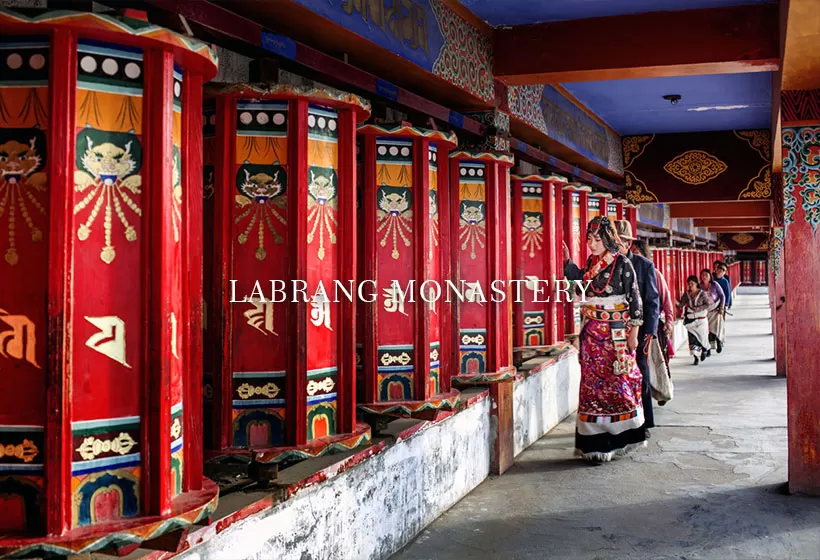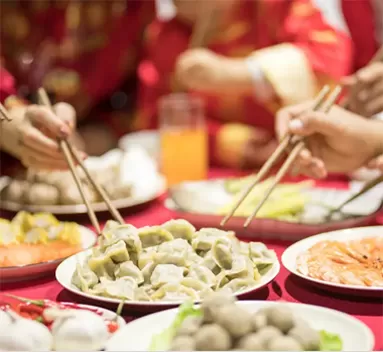Xiahe Travel Guide, How to Plan a Trip in Xiahe
Overview
Xiahe County, located in the northwest of Gannan Tibetan Autonomous Prefecture in Gansu Province, the gateway to Gannan and belongs to the Amdo Tibetan area, is named after the Daxia River that flows through the region. Known for its unique Tibetan Buddhist culture and rich folk customs, Xiahe is often referred to as "the China’s Labrang Monastery, the World’s Tibetan Academy".
With both beautiful mountains and rivers, and a harmonious blend of scenery and cities, Xiahe features abundant tourism resources and a deep historical and cultural heritage, renowned for its exceptional natural and cultural resources, often called the "Second Tibet" and the "Eastern Vatican".
The Best Time to Visit Xiahe
The best time to visit Xiahe is July and August in summer. The summer in Xiahe is pleasant, with the grasslands blooming in a riot of colors, making the scenery particularly enchanting. During this time, various traditional festivals are also held, allowing visitors to enjoy both the beautiful landscapes and immerse themselves in the local culture.
Must-visit Attractions
 Labrang Monastery
Labrang MonasteryLabrang Monastery, one of the six major monasteries of the Gelug sect of Tibetan Buddhism, is globally renowned as the "World Academy of Tibetan Studies", preserving the best Tibetan Buddhist educational system in China.
Sangke Grassland located on the northeastern edge of the Qinghai-Tibet Plateau, with an average altitude of over 3,000 meters, is one of the most pristine grasslands of the plateau, abundant with water and grass, variegated with cattle and sheep.
Ganjia Secret Realm, with its unique geological formations, encompasses all the scenic features of the Qinghai-Tibet Plateau, including cliffs, grasslands, lakes, canyons, and caves, with Bajiao (Eight-angle) Town, Zuohai Temple, and White Stone Cliff scattered across like a cluster of stars.
Darzong Lake, located 17 kilometers northeast of Xiahe, is revered by the local people as a "sacred lake". With an elevation of 3,000 meters, and nestled amidst surrounding mountains, the lake shimmers with sparkling waters and ripples of emerald waves.
Culture of Xiahe
Xiahe is located at the junction of the Qinghai-Tibet Plateau and the Loess Plateau, where agricultural culture meets nomadic culture. It is also an important passage of the ancient Tang-Tibet route of the Silk Road. Throughout history, Xiahe has been the cultural and religious center of the Amdo Tibetan region and a thriving place for the "tea-horse trade". It is the Tibetan region closest to the inland and retains Tibetan traditional culture relatively intact.
The Amdo Tibetans in Xiahe, who have long lived in the cold high-altitude plateau and practiced a nomadic lifestyle that follows the growth of water grass, wear traditional Tibetan robes made of sheepskin. The robes are large, durable, and warm, that during the day they are tied at the waist, and at night the belts are undone to serve as blankets. They are known for their respect for rituals, strong sense of friendship, and warm hospitality. When they meet, they greet each other with both hands extended, palms facing up, and a smiling face. There are strict rules of etiquette for addressing elders, with younger people always seated according to age when drinking, eating, or drinking tea together.
Tibetan Thangka is a traditional art form in Xiahe and is listed as a national intangible cultural heritage. Thangka refers to religious scroll paintings that are mounted on satin and hung for veneration. Tibetan Thangka paintings have a unique composition, where the artwork is not bound by real time or space; even in a small frame, the picture portrays a vast domain. The designs cleverly use patterns of deformed mountains, auspicious clouds, flowers, and other motifs to naturally divide complex scenes, creating independent yet interconnected narratives, both unique and vivid.
Traditional Activities
The Xianglang Festival is a traditional festival of the Tibetan people in Xiahe. Held from the 4th to the 17th day of the 6th lunar month, Tibetans gather on grasslands and in forests, where they set up tents, slaughter cattle and sheep, prepare fragrant tea, and serve fine wine. Riders on brightly decorated horses and yaks arrive to participate in activities such as horse racing and archery. Young men and women, accompanied by the sounds, sing passionate and drinking songs, performing the "Guozhuang" dance and Tibetan opera.
The Arrow Festival is held in the 5th and 6th lunar months, during which each household is required to make a long arrow, about three meters in length, tied with painted wooden boards and attached to pine branches. At dawn, people ride horses, carrying the arrows to the sacred mountain for a ritual offering. The arrows are inserted into the ground, pine branches are ignited, and "wind horse" kites are released. As prayer flags flutter and pine smoke rises, the air is filled with the sound of the participants' chants and calls.
The Sunning Buddha Festival is held on the 13th day of the first lunar month. Led by the monastery's senior lamas, monks carry a giant Thangka depicting a Buddha image to the foothills opposite the monastery, unfolding them on the sunning platform. Thousands of monks and devotees gather to chant prayers, that the scene was very spectacular.
Best Places to Visit
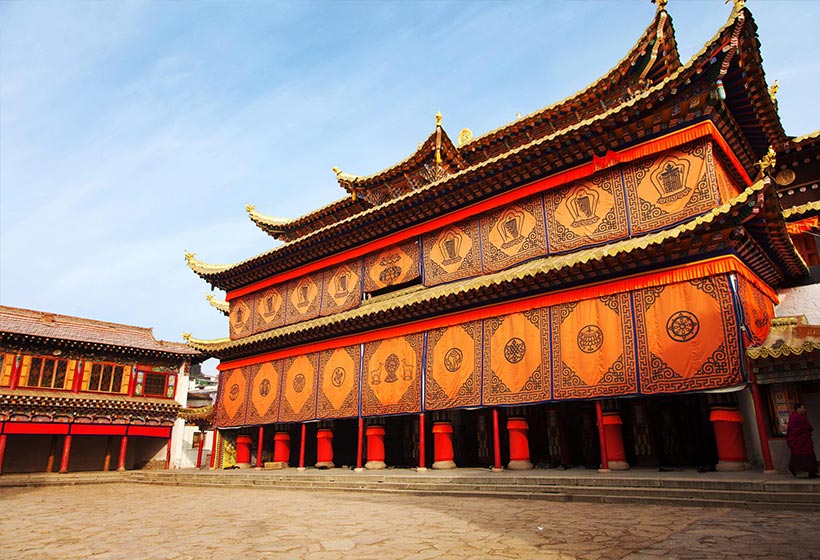 Langmu Temple
Langmu TempleXiahe County, named after the Daxia River within its borders, is located at the junction of Gansu, Qinghai, and Sichuan provinces. The county is home to scenic attractions such as Labrang Monastery, Sangke Grassland, the Ganjia Secret Realm, and Darzong Lake. Among them, Labrang Monastery is internationally renowned as the "World Academy of Tibetan Studies".
Diebu County, located to the east of the Qinghai-Tibet Plateau and on the south of Gannan, is historically known as "Diezhou", which means "thumb" in Tibetan, and it is said to be the place where the mountain god "pressed" down, most famous for its scenic area of Zhagana.
Luqu County is located in the southwestern part of Gansu, on the eastern edge of the Qinghai-Tibet Plateau, bordering Xiahe County to the north. The county is home to the “oriental Switzerland” Langmu Temple, the "pearl of the plateau" Gahai Lake, and the "fairyland on earth" Zhecha Stone Forest.
Local Food and Snacks
Tibetan cuisine is often associated with simple and modest meals in people's minds, as the high mountains and remote regions have traditionally been home to plain, unpretentious food. However, just like life is full of surprises, in the Tibetan region of Xiahe, one can also enjoy exquisite and supreme flavors.
Xiahe Tendons, a unique cuisine in Xiahe, is primarily made from lamb tendons, complemented by rare ingredients such as wood ear, stir-fried with pepper and Sichuan peppercorn, which is tender, melts in your mouth, and leaves an unforgettable aftertaste.
Xiahe Daoshehe, also known as Stone-Grilled Meat, is a unique delicacy from pastoral areas. Marinated lamb is placed along with heated stones inside a sheep's stomach, where the residual heat cooks the meat, resulting in a tender, juicy flavor.
Tsampa, a staple food of the Tibetan people, is made by grinding roasted highland barley into flour. While eating, mix a small amount of butter tea, dried curd, and sugar into the flour, then shape it into small balls.
Best Things to Do in Xiahe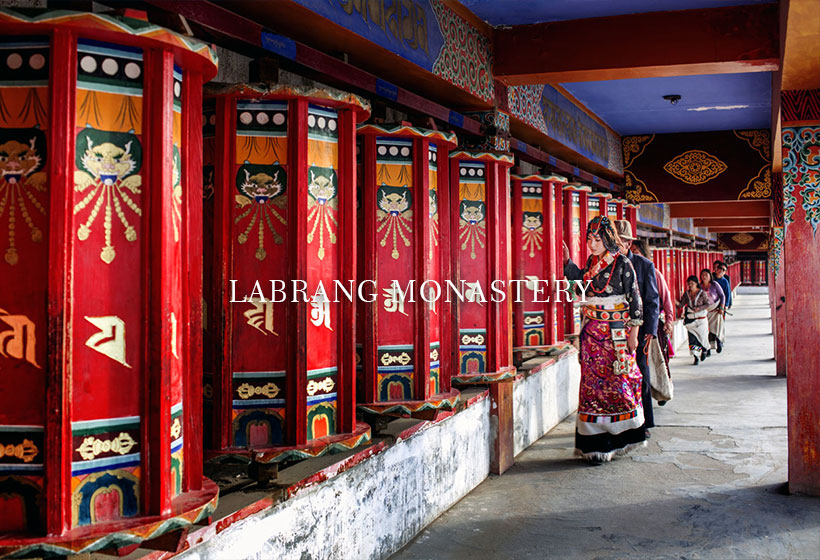 Prayer Wheels beside the Circumanbulation
Prayer Wheels beside the Circumanbulation
 Prayer Wheels beside the Circumanbulation
Prayer Wheels beside the CircumanbulationGannan Xiahe is a hidden paradise, a serene retreat with few people and stunning scenery. If you're tired of the same old travel routes and are looking for a peaceful sanctuary away from the hustle and bustle, then Xiahe is the place to be. Here, you'll find everything you're seeking.
Luxury Hotel in Xiahe
Xiahe Tianzhu International Hotel is located near the world-renowned Tibetan Buddhist institution, Labrang Monastery, and offers a panoramic view of China’s most beautiful Tibetan street and the White Conch Square.
Xiahe Wozha Guesthouse is situated in the bustling center of Xiahe, close to the Labrang Monastery and Sangke Prairie, surrounded by numerous unique shops for convenient living.
Laya Homestay features traditional Tibetan-style architecture with a fully wooden structure. The service is warm and attentive, just about one kilometer from the west gate of Labrang Monastery.
How to plan a Xiahe travel itinerary
Day 1: Arrive in Xiahe and check into your hotel. Take a walking tour of the town and explore the local markets and shops. Visit the Labrang Monastery in the afternoon and spend time exploring the complex and learning about Tibetan Buddhism.
Day 2: Take a day trip to the Songzhan Grasslands and enjoy the scenic views and outdoor activities. Have a traditional Tibetan meal for lunch and taste the local cuisine. Visit the Langmu Temple in the late afternoon and participate in a prayer ceremony if possible.
Day 3: Visit the Gelugpa Sect of Buddhism Museum and learn about the history and teachings of Tibetan Buddhism. Take a scenic hike in the surrounding mountains and enjoy the fresh air and beautiful views. In the evening, attend a Tibetan dance performance and experience the traditional culture.
Day 4: Take a day trip to the nearby town of Tongren and visit the renowned Rinpung Dzong Monastery. Explore the local markets and shops in Tongren and buy souvenirs to take home. Return to Xiahe in the evening and relax in a local tea house.
Customize Your Unique Xiahe Labrang Trip
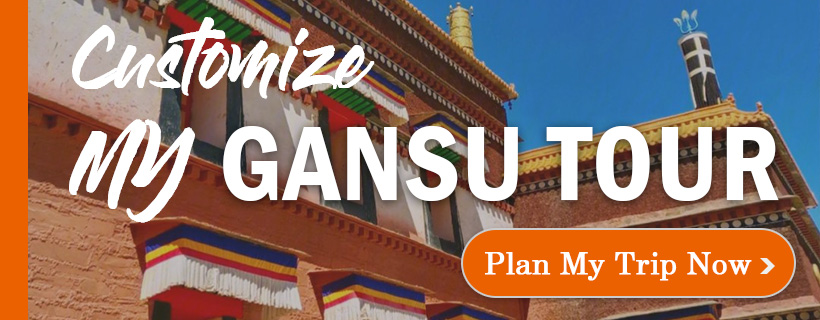
If you are interested in one of the Xiahe itineraries mentioned above, please contact us, and we will be happy to customize it and provide a quote tailored to your preferences.
Alternatively, if you would like to customize your Xiahe Tour, please visit our Xiahe Tour Customized Center. We assure you that you will receive a reply within 24 working hours.
Informative Articles for Xiahe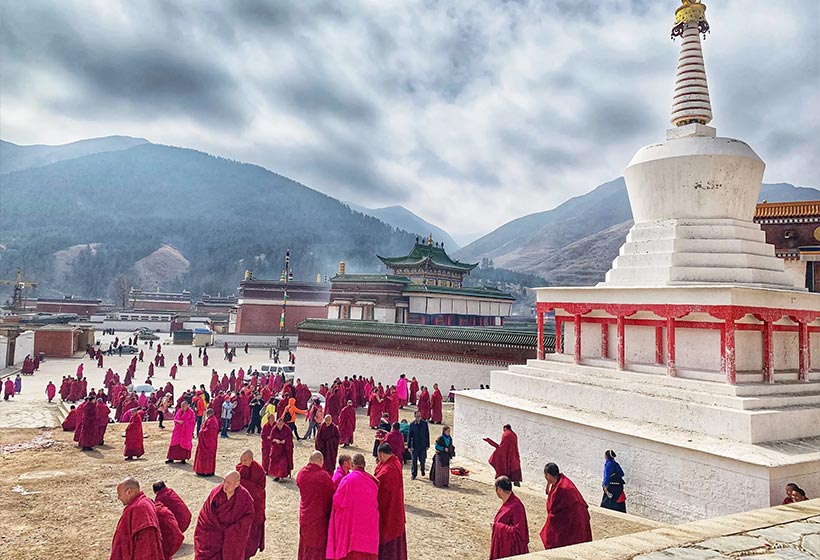 the Lamas of Labrang
the Lamas of Labrang
 the Lamas of Labrang
the Lamas of Labrang
GREAT FAMILY CHINA TOUR
JULY 2024 We wanted to thank Grace at China Culture tour for organizing a great tour of China. We enjoyed our Beijing - Xian-Chengdu -Guilin -Yangshuo - Shanghai trip. Our local guides Bruce in Beijing, Susan in Xian, Jane in Chengdu, Mike in Guilin and Mary in Shanghai took care of us…read more details »
Teng Han L from SINGAPORE
Ready to Create a Unique Dream Travel?
